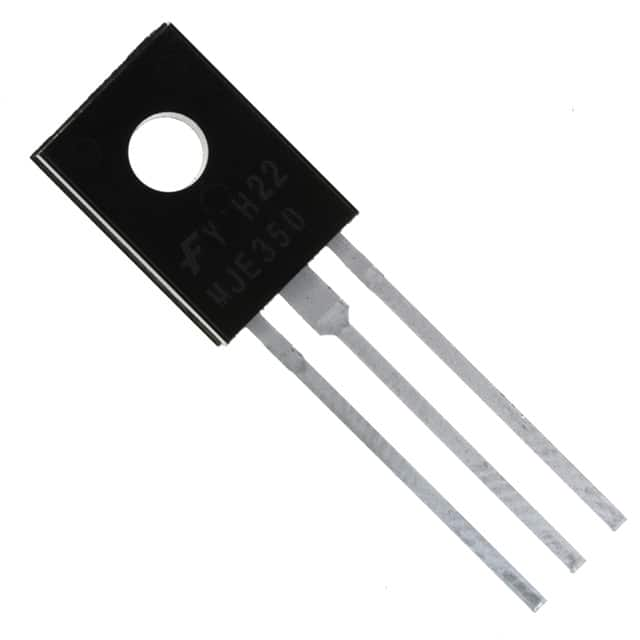Lihat spesifikasi untuk detail produk.

BD437S Transistor: Encyclopedia Entry
Introduction
The BD437S transistor is a crucial component in electronic devices, belonging to the category of power transistors. This entry provides an overview of the BD437S transistor, including its basic information, specifications, pin configuration, functional features, advantages and disadvantages, working principles, application field plans, and alternative models.
Basic Information Overview
- Category: Power Transistor
- Use: Amplification and switching applications
- Characteristics: High current and voltage capabilities, low saturation voltage
- Package: TO-126
- Essence: Silicon NPN Epitaxial Planar Transistor
- Packaging/Quantity: Typically available in reels or tubes containing multiple units
Specifications
- Collector-Emitter Voltage (VCEO): 45V
- Collector-Base Voltage (VCBO): 45V
- Emitter-Base Voltage (VEBO): 5V
- Collector Current (IC): 4A
- Power Dissipation (PD): 36W
- Transition Frequency (ft): 3MHz
- Operating Temperature Range: -65°C to 150°C
Detailed Pin Configuration
The BD437S transistor has three pins: 1. Collector (C): Connects to the positive supply voltage. 2. Base (B): Controls the transistor's conductivity. 3. Emitter (E): Connects to the ground or common reference point.
Functional Features
- High current gain
- Low saturation voltage
- Fast switching speed
- Robust construction for reliability
Advantages and Disadvantages
Advantages
- Suitable for medium power amplification and switching applications
- Robust construction for reliable performance
- Low saturation voltage minimizes power loss
Disadvantages
- Limited maximum voltage and current ratings compared to higher-power transistors
- May require heat sinking for high-power applications
Working Principles
The BD437S operates based on the principles of bipolar junction transistors (BJTs). When a small current flows into the base terminal, it controls a much larger current between the collector and emitter terminals, allowing for amplification and switching functions.
Detailed Application Field Plans
The BD437S transistor finds extensive use in various electronic applications, including: - Audio amplifiers - Switching circuits - Motor control - LED drivers - Voltage regulators
Detailed and Complete Alternative Models
Some alternative models to the BD437S transistor include: - BD438S - BD435S - BD436S - 2N3055
In conclusion, the BD437S transistor is a versatile component with a wide range of applications in electronic circuits, offering a balance of performance and cost-effectiveness.
Word Count: 346
Sebutkan 10 pertanyaan dan jawaban umum terkait penerapan BD437S dalam solusi teknis
What is BD437S?
- BD437S is a PNP silicon epitaxial-base transistor designed for use in general-purpose amplifier and switching applications.
What are the key features of BD437S?
- The key features of BD437S include high current capability, low collector-emitter saturation voltage, and complementary NPN types available (BD438S).
What are the typical applications of BD437S?
- Typical applications of BD437S include audio amplification, driver stages in hi-fi amplifiers, and power supply regulators.
What is the maximum collector current of BD437S?
- The maximum collector current of BD437S is 1.5A.
What is the maximum collector-emitter voltage of BD437S?
- The maximum collector-emitter voltage of BD437S is 45V.
What is the typical hFE (DC current gain) of BD437S?
- The typical hFE of BD437S is 40 to 160 at IC = 0.5A.
What is the power dissipation of BD437S?
- The power dissipation of BD437S is 12.5W.
Is BD437S suitable for high-frequency applications?
- No, BD437S is not suitable for high-frequency applications due to its transition frequency (fT) of 30MHz.
Can BD437S be used in automotive applications?
- Yes, BD437S can be used in automotive applications such as electronic ignition systems and motor drive circuits.
Are there any recommended alternative transistors to BD437S?
- Yes, some recommended alternative transistors to BD437S include TIP32C, 2N6045, and MJE2955T.

